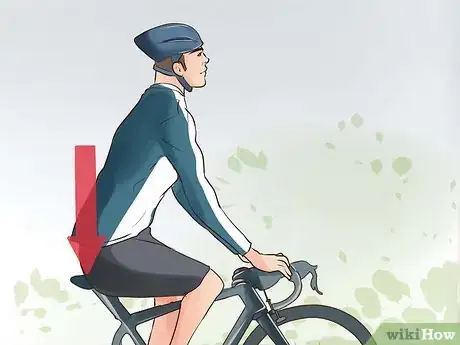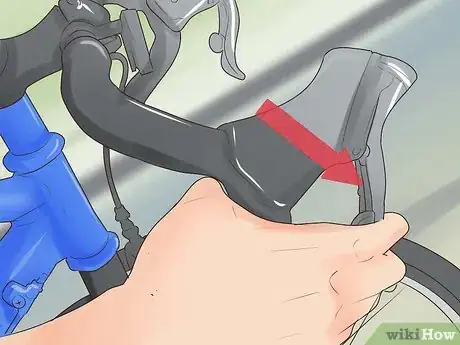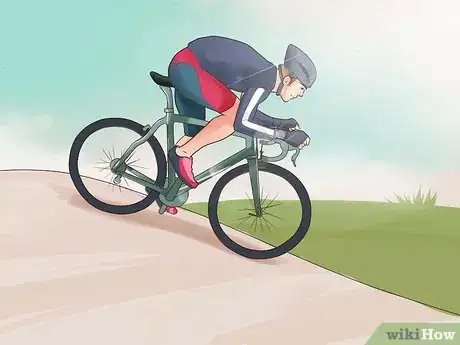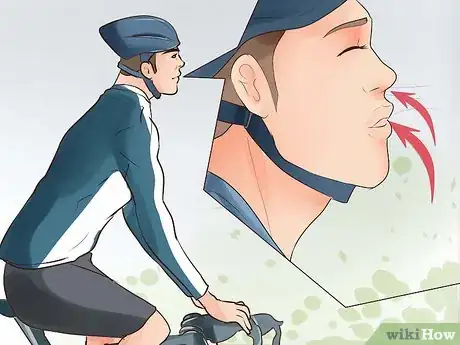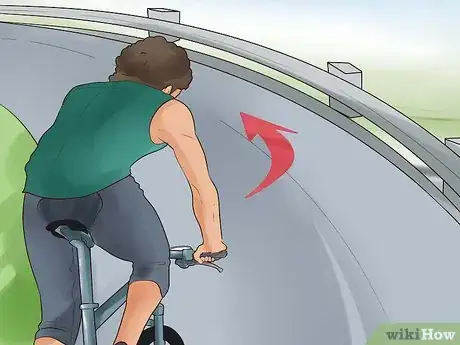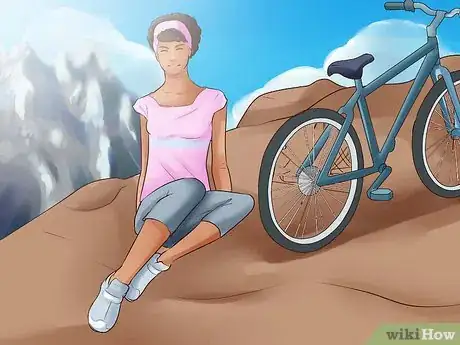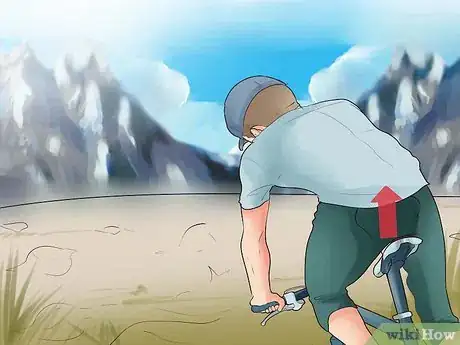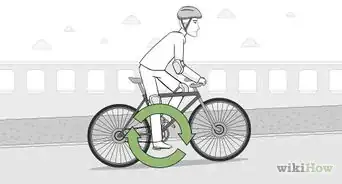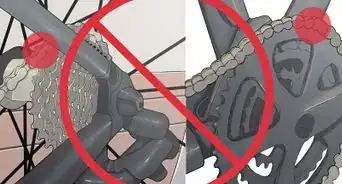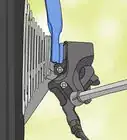wikiHow is a “wiki,” similar to Wikipedia, which means that many of our articles are co-written by multiple authors. To create this article, 18 people, some anonymous, worked to edit and improve it over time.
There are 7 references cited in this article, which can be found at the bottom of the page.
wikiHow marks an article as reader-approved once it receives enough positive feedback. This article received 11 testimonials and 90% of readers who voted found it helpful, earning it our reader-approved status.
This article has been viewed 370,620 times.
Learn more...
Climbing hills on a bicycle isn't everyone's idea of fun... Yet, if you live in a hilly area or you're traveling through hills, why deny yourself the pleasure of continuing to ride regularly just because of those steeper hills? Climbing steep hills on a cycle requires knowing a few tips about increasing your stamina, positioning yourself correctly on the cycle, and changing those gears. So hop back on your bike with this advice and find yourself a few steep hills to practice on until it feels much easier!
Steps
-
1Prepare yourself mentally. If you've cycled a hill before, you'll already know that it hurts physically and takes a lot of effort. If you've long been the sort to hop off the bike and walk it up the hill, you'll need a little mental prepping first!
- Accept that riding uphill is more effort. Once you stop fighting it mentally, you can spend more time motivating your body and learning how to make the ride easier on you.
- Get excited about the challenge of making it to the top of the hill. This is something that you're quite capable of doing and proving it to yourself can be a lot of fun in between the agony!
- Don't expect to go fast. That's unrealistic and likely to wear you out before you've hardly begun.
- Understand the benefits to your body of cycling on hilly terrain. Hilly terrain builds your fitness levels up by helping your body learn to use oxygen more efficiently. Also, the process of climbing the hill on a bike uses different muscle groups as you shift about on the bike to maintain maximum power. The climb allows you to work hard, and the descent allows you to recover, providing a perfect exercise workout per each hill.[1]
-
2Start the hill climb staying seated on the bike seat (or saddle). Keep your weight back and hold the handlebars over the top and close to the center.[2] Your hands should be about 2-3 inches (5-7.5cm) from the center stern to allow maximum breathing. If your chest is open and shoulders back, you'll be able to breathe much more easily.Advertisement
-
3As you move up the hill, crouch down. This requires you to keep your body low and your elbows low but slightly pointed out to keep your chest open for easier breathing and to keep your upper body relaxed.[3]
-
4Toward the top of the hill, stand up from the seat (saddle). At this point, use all of your body weight to assist you in pushing down hard on the pedals. Standing up takes a lot more energy than sitting down, so don't overuse this technique; keep it till the last portion of the steep hill. Your hands should now sit on top of the brake levers.
- Shift your body in time with your legs. Keep your back straight and your chest open to aid good breathing.[4]
-
5Learn how to shift gear going uphill. Those gears are there to be used, and uphill they will definitely assist you with extra power if you change them effectively. However, it takes practice to get used to how it feels to change gears as a method of changing the pace and power when climbing a hill, so don't despair, just keep practicing it.
- Shift the gears in anticipation of or just before each terrain gradient change, not once you've already reached each gradient. Keep pedaling while you change gears, so as to maintain momentum.[5] The aim is to keep your effort as constant as possible.
- A low gear is needed for going uphill (you'll need the higher gear for going back down).
-
6Keep practicing. This technique won't be easy for the first few tries but it's important to persevere. It is only in the doing that you will learn the feel for climbing the hill on the bike and learn the right timing for shifting your body weight on the bike to achieve the maximum power for the least effort.
- Start with shorter hills and gradually increase your trials to steeper ones.
-
7Try using low gear with a steep hill. Once you're feeling more confident with hill climbing on a bicycle, learn the technique for climbing a hill economically. This technique requires that you stay seated and use a low gear, and don't rely on standing up for much of the time:[6]
- Breathe regularly and deeply.
- Keep it slow and gradual in the early stages of the hill climb. This isn't a race, it's about economizing your energy usage.
- Select the low gear that will still allow for reasonably fast pedaling.
- Sit up and hold the outer edges of the handlebars. This will ensure that your breathing is made easier by an open chest.
- Once the hill gets much harder, and you notice you've no lower gears left to use, grip onto the brake hoods. Pull them to give you more power when pedaling.
- Only now use standing briefly if needed. At this point, you should intuitively know what feels best for you in the combination between standing and sitting in the bike, for the most economic use of your energy.
- Stay focused on a steady, rhythmical climb that makes the most of every turn of the wheels to pull you up this hill. This kind of slower but powerful riding takes time to master but it's efficient and is good for longer rides, such as when traveling through hilly country for long distances. You are far less likely to tire out than using the method that requires standing to get you up the hills.
-
8In turns, take the long way on the outer side of the turn. It may seem illogical, but you'll lose less momentum that way.
-
9Have a rest at the top of the hill. For a particularly strenuous hill climb, a brief hilltop rest may be in order, especially while training yourself to get used to it.
-
10Descend with care. Be alert for obstacles like cars, pedestrians, animals, and objects on the road. Don't go down too quickly – use both your brakes to pull back the speed, and by sitting upright in your seat, so that your body acts like an "air brake".[7]
- If you're descending over uneven terrain such as on a mountain bike trail, it's best to get out of the seat and let the bike take all the bumps for you. The steeper the descent, the further back you should place your weight while looking forwards.[8]
Community Q&A
-
QuestionI have to bike a hill with a class of about 18 people. How do I use these tips when there are people surrounding me?
 Tushar SharmaCommunity AnswerWhile climbing on your bike, keep your hydraulic lock locked to prevent skids. Keep your seat high as it helps in peddling in low gears (depending upon the incline and your comfort). Try to never stop peddling as you might not be able to get on your cycle again.
Tushar SharmaCommunity AnswerWhile climbing on your bike, keep your hydraulic lock locked to prevent skids. Keep your seat high as it helps in peddling in low gears (depending upon the incline and your comfort). Try to never stop peddling as you might not be able to get on your cycle again. -
QuestionI have an 18-gear cycle; how do I use front gear and back gear for hilly roads, and for normal roads, which gear should I use?
 Community AnswerUsually when climbing, it's best to be in the small front ring and the largest back ring. If your cadence is about 100 rpm, then whatever gear you're in is fine. It depends on the road, but as long as your pedaling is at a level you're comfortable with, you're fine.
Community AnswerUsually when climbing, it's best to be in the small front ring and the largest back ring. If your cadence is about 100 rpm, then whatever gear you're in is fine. It depends on the road, but as long as your pedaling is at a level you're comfortable with, you're fine. -
QuestionDo you have tips for starting again halfway up a hill after you’ve stopped?
 Community AnswerDig your dominant foot into the pedal with all your weight, and then push hard with the other foot to get yourself going.
Community AnswerDig your dominant foot into the pedal with all your weight, and then push hard with the other foot to get yourself going.
Warnings
- Don't climb something too steep; know your limits and push yourself only as far as is safe. The hill will still be there tomorrow for another try.⧼thumbs_response⧽
References
- ↑ Chris Sidwells, 7 Week Cycling for Fitness, p. 76, (2006), ISBN 1-4053-1101-0
- ↑ Chris Sidwells, 7 Week Cycling for Fitness, p. 76, (2006), ISBN 1-4053-1101-0
- ↑ Chris Sidwells, 7 Week Cycling for Fitness, p. 76, (2006), ISBN 1-4053-1101-0
- ↑ Chris Sidwells, 7 Week Cycling for Fitness, p. 111, (2006), ISBN 1-4053-1101-0
- ↑ Chris Sidwells, 7 Week Cycling for Fitness, p. 67, (2006), ISBN 1-4053-1101-0
- ↑ Chris Sidwells, 7 Week Cycling for Fitness, p. 83, (2006), ISBN 1-4053-1101-0
- ↑ Chris Sidwells, 7 Week Cycling for Fitness, p. 77, (2006), ISBN 1-4053-1101-0
- ↑ Chris Sidwells, 7 Week Cycling for Fitness, p. 106, (2006), ISBN 1-4053-1101-0
- ↑ Chris Sidwells, 7 Week Cycling for Fitness, p. 115, (2006), ISBN 1-4053-1101-0

